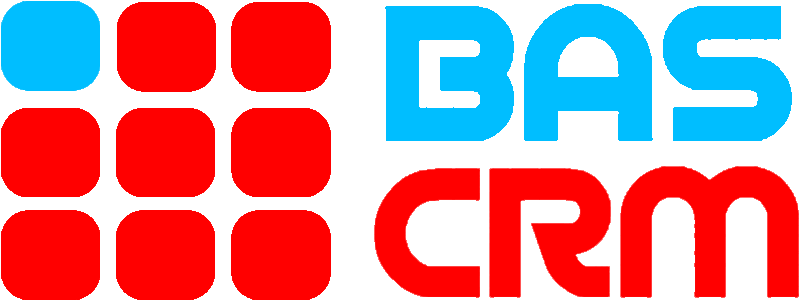Description

vtenext

SPREAD
Comprehensive Overview: vtenext vs SPREAD
vtenext and SPREAD are two distinct software solutions, each with its unique features and target markets. Here is a comprehensive overview of both:
vtenext
a) Primary Functions and Target Markets:
-
Primary Functions: vtenext is a CRM (Customer Relationship Management) and BPM (Business Process Management) hybrid that focuses on automating business processes. It helps organizations streamline workflows, manage customer relationships, and automate various business operations. Features include contact management, sales pipeline management, marketing automation, customer service, and support automation.
-
Target Markets: vtenext primarily targets SMEs (Small and Medium-sized Enterprises) that need a robust CRM solution combined with BPM capabilities. It's suitable for industries that require custom workflow automation such as finance, insurance, retail, and manufacturing.
b) Market Share and User Base:
-
Market Share: vtenext occupies a niche market within the CRM and BPM sectors. It doesn't have a massive market share compared to giants like Salesforce or Microsoft Dynamics, but it holds a significant position among businesses looking for customizable and open-source solutions.
-
User Base: The user base is relatively small to medium-sized enterprises that prefer flexibility and cost-effectiveness over comprehensive, high-priced software solutions.
c) Key Differentiating Factors:
- Open Source: vtenext is open-source, providing users the freedom to customize and extend the platform to suit their specific needs.
- Integration of BPM: It offers integrated BPM functionality, which is not standard in many CRM solutions, enabling complex process automation.
- Cost-Effective: It is generally more cost-effective than larger CRM platforms, making it accessible for smaller businesses.
SPREAD
a) Primary Functions and Target Markets:
-
Primary Functions: SPREAD is an engineering and data management platform designed to optimize the R&D processes of companies. The software aids in data-driven development, providing tools for managing engineering data, simulations, and enhancing collaborative workflows among engineering teams.
-
Target Markets: SPREAD primarily targets large enterprises and organizations involved in complex engineering and development projects across sectors such as automotive, aerospace, and industrial engineering.
b) Market Share and User Base:
-
Market Share: SPREAD operates in a specialized market with a unique focus on engineering data management and R&D optimization. Its market share is defined by its appeal to industries that heavily invest in engineering innovation.
-
User Base: Its users are typically large enterprises with significant engineering teams and complex data management needs.
c) Key Differentiating Factors:
- Focus on Engineering and R&D: SPREAD uniquely focuses on engineering data management and R&D enhancements, which is a niche compared to general CRM or BPM systems.
- Collaborative Capabilities: It emphasizes collaboration among engineering teams, allowing for streamlined communication and data sharing, which is critical in engineering-intensive environments.
- Advanced Data Management Tools: SPREAD offers specialized tools for handling complex engineering data and simulations, setting it apart from general data management software.
Comparison
While both vtenext and SPREAD involve process and data management, their functionalities, target markets, and differentiating factors position them for different types of businesses with distinct needs:
- Functionality: vtenext combines CRM and BPM for general business process automation, while SPREAD focuses on engineering data management.
- Target Markets: vtenext is more SME-focused across various industries, while SPREAD is tailored for large enterprises in engineering-driven fields.
- Market Presence: vtenext has a wider appeal to a range of small to medium businesses looking for a flexible CRM solution, whereas SPREAD serves niche sectors reliant on engineering innovation.
Each product's success and adoption depend heavily on the specific needs of their target user base, with vtenext catering to businesses looking for customizable CRM solutions and SPREAD appealing to complex R&D environments seeking efficient data management.
Contact Info

Year founded :
2011
Not Available
Not Available
Italy
http://www.linkedin.com/company/vte-crm

Year founded :
2018
Not Available
Not Available
Singapore
Not Available
Feature Similarity Breakdown: vtenext, SPREAD
To provide a feature similarity breakdown for vtenext and SPREAD, we need to consider the functionalities and target use cases of both platforms. vtenext is primarily known as a CRM with BPM (Business Process Management) capabilities, while SPREAD is a collaborative software tool often used in project management and team collaboration contexts. Below is the comparison based on the information typically available for such platforms:
a) Core Features in Common
**1. Collaboration Tools:
- Both platforms offer features that facilitate team collaboration, such as task assignments and communication tools.
2. Task Management:
- vtenext and SPREAD both include functionalities to manage and track tasks and activities within a project or process.
3. Reporting and Analytics:
- Basic reporting and analytics capabilities for monitoring progress and performance metrics are present in both products.
4. Integration Capabilities:
- Both platforms support integration with other software tools and services, enhancing their flexibility and utility.
5. User Management:
- Features for managing user roles, permissions, and access control are present, catering to team-based environments.
b) User Interface Comparison
vtenext:
- CRM-Focused Layout: The interface is designed to support CRM activities, showing customer data, interactions, and process flows prominently.
- BPM Integration: It offers visual process designers for workflows, allowing users to create and manage complex business processes.
- Customization Options: Offers significant customization to tailor the CRM and BPM workflows according to business needs.
SPREAD:
- Project Management Structure: The UI is oriented towards project timelines, task boards, and resource management.
- Simplicity and Accessibility: Generally adopts a simpler, more intuitive user interface designed for ease of use in collaborative environments.
- Visualization Tools: Includes Gantt charts, Kanban boards, and other visualization tools for project tracking.
c) Unique Features
vtenext:
- BPM Capabilities: Its tight integration of CRM and BPM capabilities allows businesses to automate and optimize complex workflows, beyond mere task management.
- Process Automation: Offers tools for automating business processes, which is not a core feature of SPREAD.
SPREAD:
- Focus on Collaboration: Places greater emphasis on real-time collaboration features tailored for team environments and project management.
- User-Friendly Design: Aimed at providing a straightforward and intuitive experience, making it accessible for teams without extensive technical expertise.
In summary, while vtenext and SPREAD share common ground in collaboration and task management, they cater to different operational needs - with vtenext leaning more towards CRM and BPM functionalities, and SPREAD focusing on project management and team collaboration.
Features

Not Available

Not Available
Best Fit Use Cases: vtenext, SPREAD
vtenext
vtenext is a CRM (Customer Relationship Management) platform that integrates BPM (Business Process Management) capabilities. It is well-suited for a variety of business use cases due to its flexibility and comprehensive feature set. Here is a breakdown of its applicability:
a) Ideal Businesses or Projects for vtenext:
-
Small to Medium Enterprises (SMEs): vtenext is particularly beneficial for SMEs looking for a cost-effective CRM solution with integrated BPM to enhance efficiency without requiring substantial customization.
-
Industries Requiring Customized Workflows: Businesses that need tailored processes, such as real estate, professional services, and manufacturing, find vtenext's BPM capabilities useful for designing custom workflows.
-
Customer-Centric Companies: Firms that seek to improve customer experiences through better engagement, personalized interactions, and automation stand to benefit significantly from vtenext.
-
Projects Involving Process Optimization: Any project aimed at streamlining business processes and improving workflow efficiencies can leverage the process management functionalities of vtenext.
SPREAD
SPREAD is typically a tool employed in the realm of risk management, applied in contexts such as engineering, software development, and systems where analysis of complex systems is crucial. It specializes in providing insights into system complexities and enhancing collaboration in high-risk industries.
b) Preferred Scenarios for SPREAD:
-
High-Risk Industries: SPREAD is invaluable in fields such as aerospace, automotive, and heavy engineering where risk management is critical and systems are often complex.
-
Complex System Analysis: It is the preferred choice when projects require a strong emphasis on understanding and mitigating risks associated with highly intricate systems, allowing for enhanced safety and efficiency.
-
Collaborative Risk Assessment: When teams from different domains need to collaboratively assess and manage risks, SPREAD excels in facilitating communication and cross-disciplinary cooperation.
c) Catering to Industry Verticals and Company Sizes
vtenext:
-
Industry Verticals: vtenext is versatile and can be tailored to suit various industry verticals, including finance, healthcare, retail, and telecommunications, due to its flexible BPM engine.
-
Company Sizes: It primarily targets SMEs but is scalable to meet the needs of larger enterprises seeking integrated CRM and process management solutions.
SPREAD:
-
Industry Verticals: SPREAD finds its niche mainly in industries that prioritize risk and safety, such as automotive, aerospace, and industrial manufacturing.
-
Company Sizes: It caters to mid-sized and large enterprises that operate within high-stakes environments where the costs of errors are significant and risk assessment plays a crucial role in project success.
In conclusion, vtenext is best suited for businesses seeking a robust CRM solution with integrated process management capabilities, especially in customer-centric and process-oriented industries. Meanwhile, SPREAD is the go-to option for high-risk, engineering-intensive sectors where understanding and mitigating complex system risks are critical. Both tools serve distinct needs and excel in their respective domains and use cases.
Pricing

Pricing Not Available

Pricing Not Available
Metrics History
Metrics History
Comparing undefined across companies
Conclusion & Final Verdict: vtenext vs SPREAD
To provide a comprehensive conclusion and final verdict for vtenext and SPREAD, we need to analyze both products' value, pros and cons, and offer specific recommendations for users deciding between them.
a) Best Overall Value:
Determining which product offers the best overall value requires weighing their features, pricing models, ease of use, support, and potential integrations.
-
vtenext: Known for its open-source CRM capabilities, vtenext combines customer relationship management with business process management (BPM), making it versatile for automation. This dual functionality adds significant value for businesses looking to streamline customer interactions and automate workflows without investing in multiple systems.
-
SPREAD: Primarily a data management and visualization tool, SPREAD offers powerful customization options, enabling users to derive insights from complex datasets effectively. It’s particularly valuable for organizations focusing on data-driven decision-making and requiring robust visualization features.
Verdict: The best value depends on the primary needs of the business. If a company prioritizes CRM functionalities with added automation, vtenext offers superior value. However, for organizations needing advanced data management and analytics, SPREAD is more advantageous.
b) Pros and Cons:
-
vtenext:
- Pros:
- Combines CRM and BPM in one platform, reducing the need for multiple tools.
- Open-source nature allows for customization and flexibility.
- Strong focus on automation, enhancing efficiency.
- Cons:
- May have a steeper learning curve for those not familiar with BPM systems.
- Requires technical expertise to fully leverage open-source customizations.
- Pros:
-
SPREAD:
- Pros:
- Robust data visualization and analysis capabilities.
- Highly customizable to meet specific data processing needs.
- User-friendly interface for visualizing complex data.
- Cons:
- May not handle CRM functions, necessitating additional software for customer management.
- Potentially higher costs if extensive customization or data processing power is required.
- Pros:
c) Recommendations for Users:
-
For CRM and Automation:
- Choose vtenext if your primary requirement is managing customer relationships with added process automation. It's suitable for businesses that need to integrate BPM with CRM functionalities and have the resources to manage an open-source platform.
-
For Data Management and Visualization:
- Opt for SPREAD if your focus is on data analysis and visualization. It's ideal for organizations that require detailed insights from large datasets and rely on data-driven strategies.
Specific Recommendations:
- Evaluate your current infrastructure and resource availability. If your team possesses technical skills, vtenext’s open-source benefits can be maximized.
- Consider the scalability of your data needs. If you anticipate handling increasingly complex data in the future, SPREAD’s visualization and management capabilities might align better.
- Test both platforms through available trials or demos to identify which system aligns with your workflow and organizational culture.
- Factor in long-term strategic goals—such as digital transformation objectives—when deciding which platform’s strengths will support those goals better.
Add to compare
Add similar companies




